One of the focuses of last month’s Productivity Roundtable in Canberra was on ways to streamline regulations to increase the rate of housing construction to meet the Albanese government’s 1.2 million housing target.
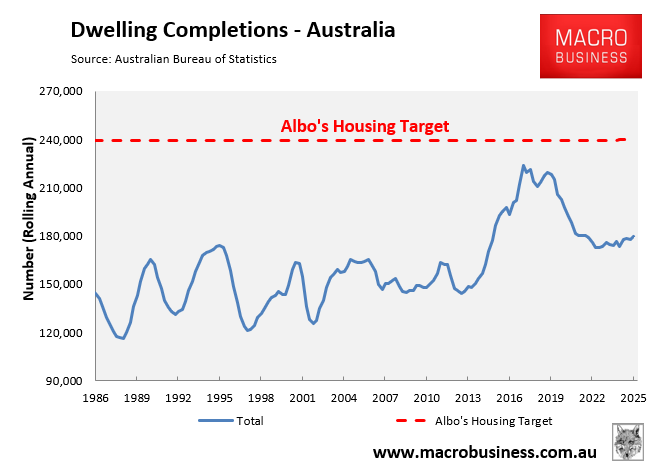
Danielle Wood, chair of the Productivity Commission (PC), told Roundtable attendees that there is a backlog of 30,000 projects awaiting approval, which are being held up by green and red tape.
The notion that merely removing red and green tape and relaxing planning would magically boost housing construction rates is flawed. Why? Because the homebuilding industry is already operating at capacity.
The following chart from Alex Joiner at IFM Investors shows that Australia’s dwelling construction pipeline remains bloated, with 252,041 homes either under construction or approved but not commenced:
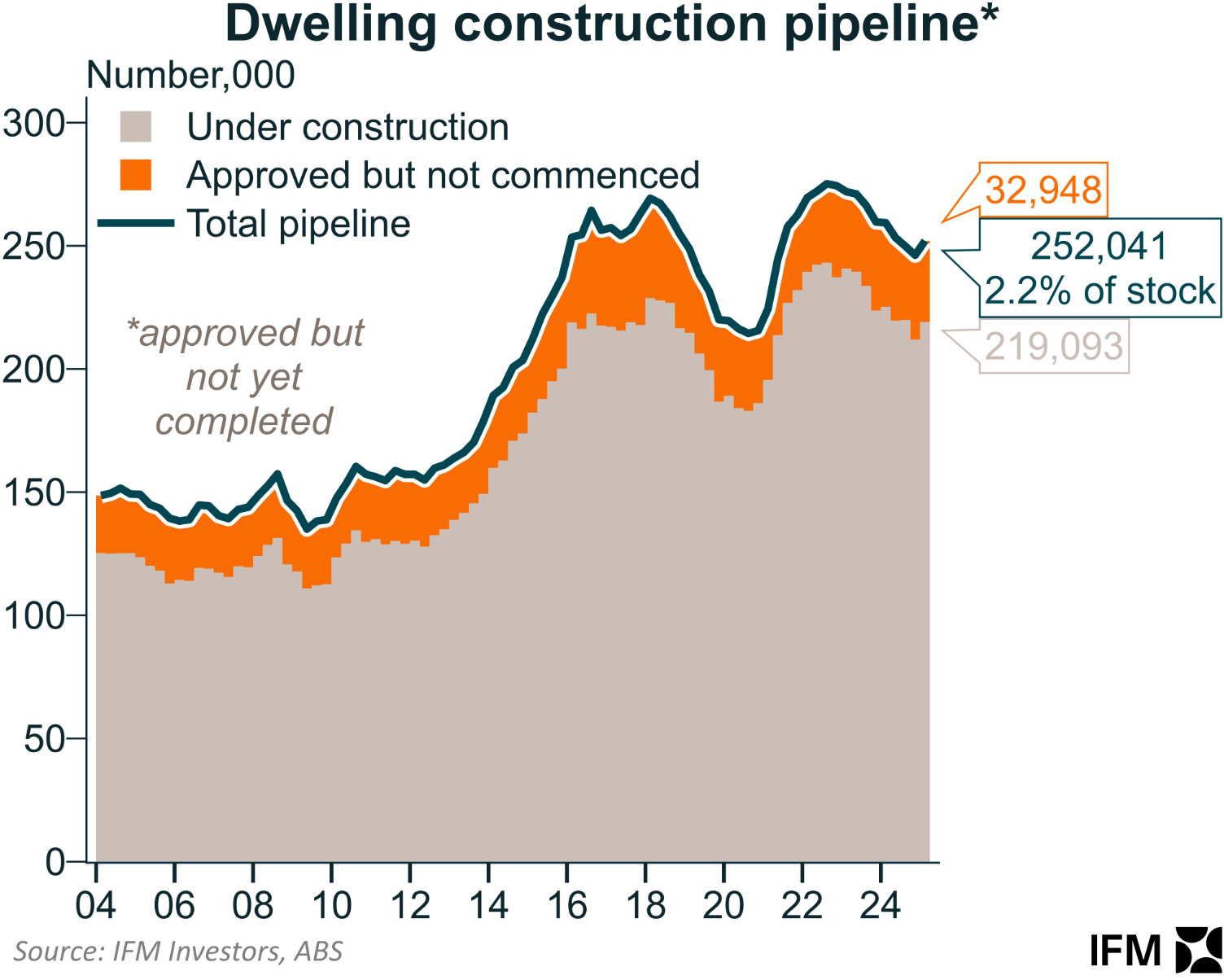
Therefore, merely adding more approvals to an already bloated pipeline is like turning the tap on when the bath is already full.
As Cotality’s head of research, Eliza Owen, wrote last month, “companies continue to be stretched thin across an already swollen pipeline and reducing margins”.
“Effectively, dwellings are being approved but getting ‘stuck’ in the commencement and construction phase”.
As a result, build times have blown out:
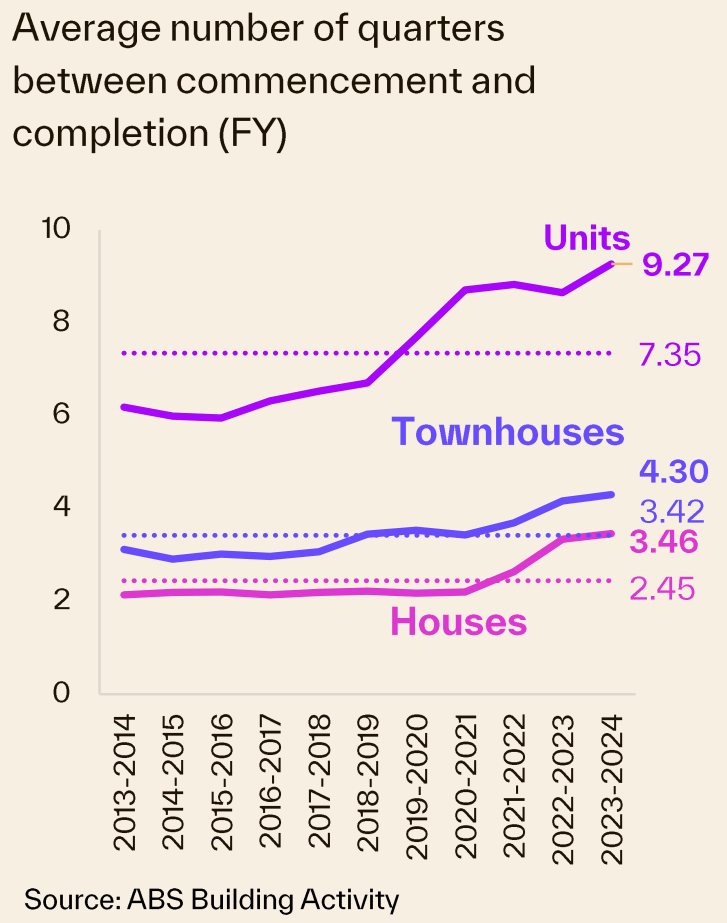
There are five main reasons why construction capacity is constrained.
First, interest rates are structurally higher today (3.6% currently) than when housing construction peaked in 2017 (1.5%).
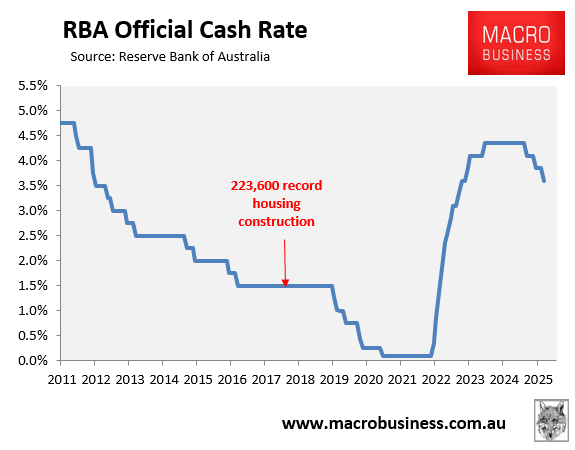
Construction costs have surged by around 40% since the start of the Covid-19 pandemic, making new homes significantly more expensive to build.
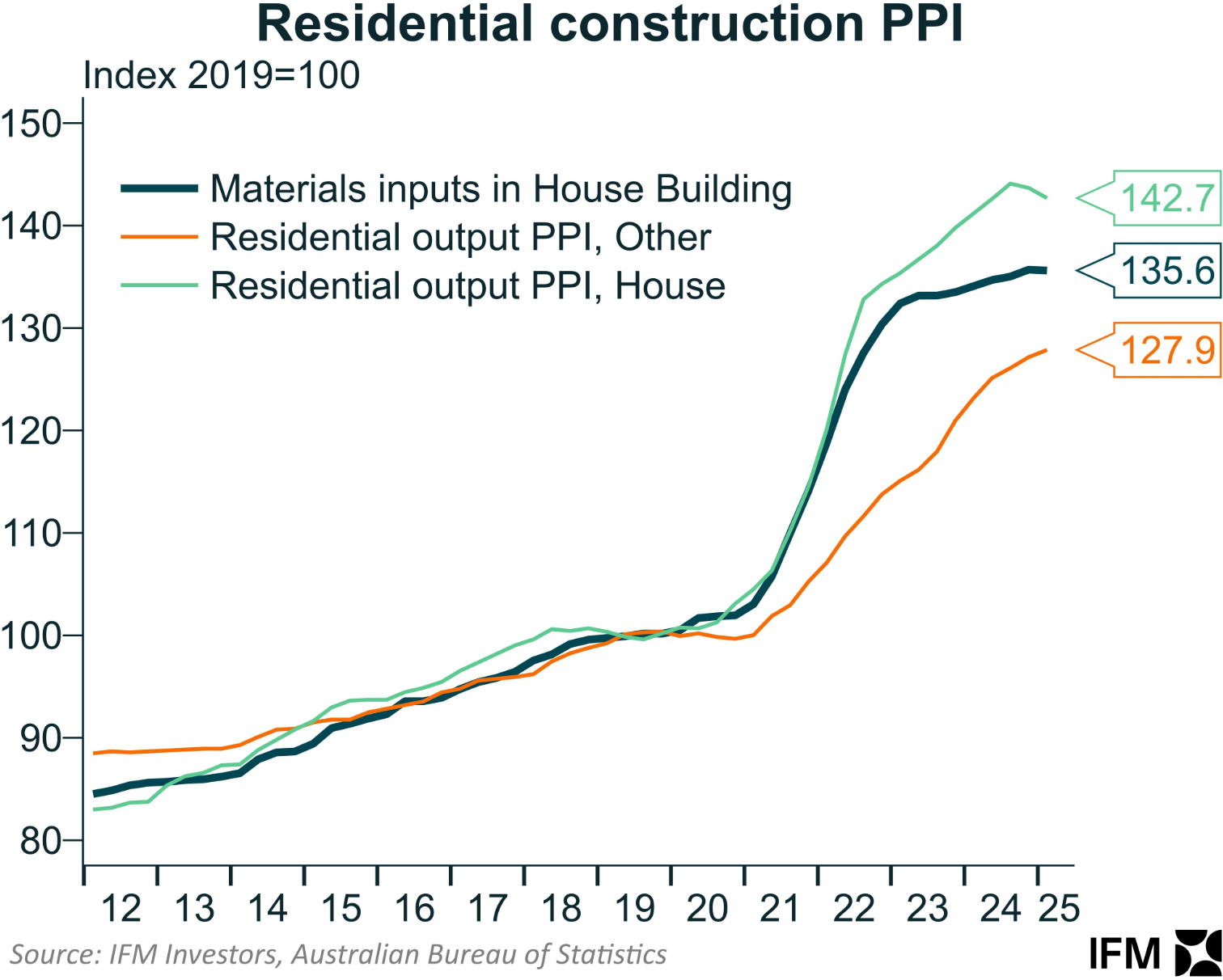
Cotality estimates that residential lot prices have also surged by 37% since the beginning of the pandemic, adding further cost constraints.
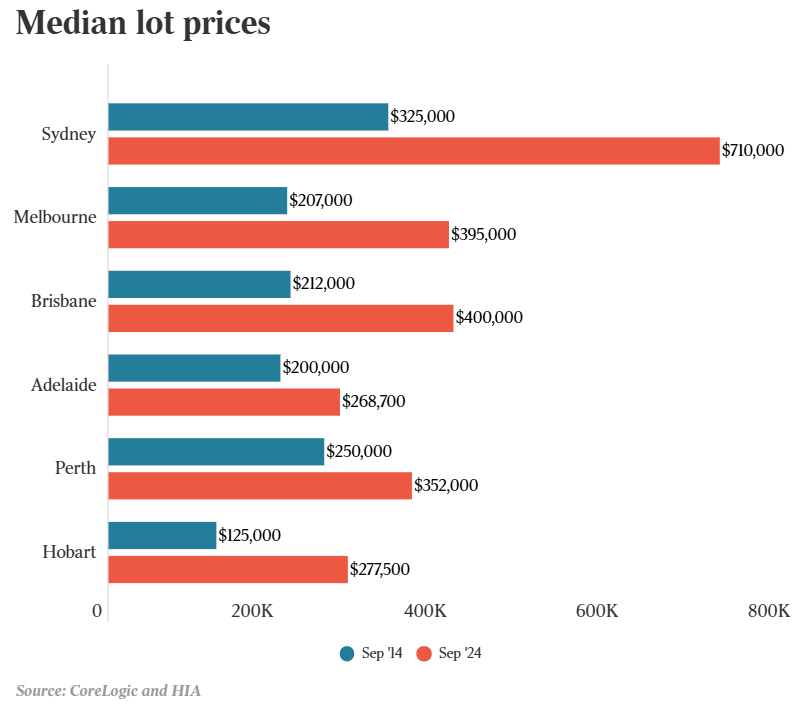
Many homebuilders have collapsed due to rising costs and falling profitability, which has reduced the sector’s capacity to deliver homes.
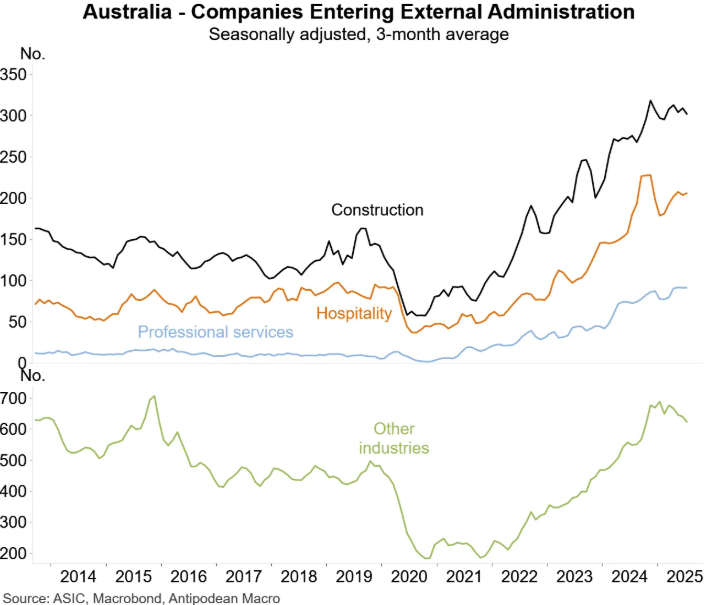
Finally, homebuilders are competing for workers and materials against government ‘big build’ infrastructure projects, pushing up costs.
Ultimately, the only genuine solution to Australia’s housing shortage is to reduce demand by slowing immigration.
The National Housing Supply and Affordability Council (NHSAC) forecast that Australia’s housing shortage would worsen by 79,000 over five years under the federal government’s population projections.
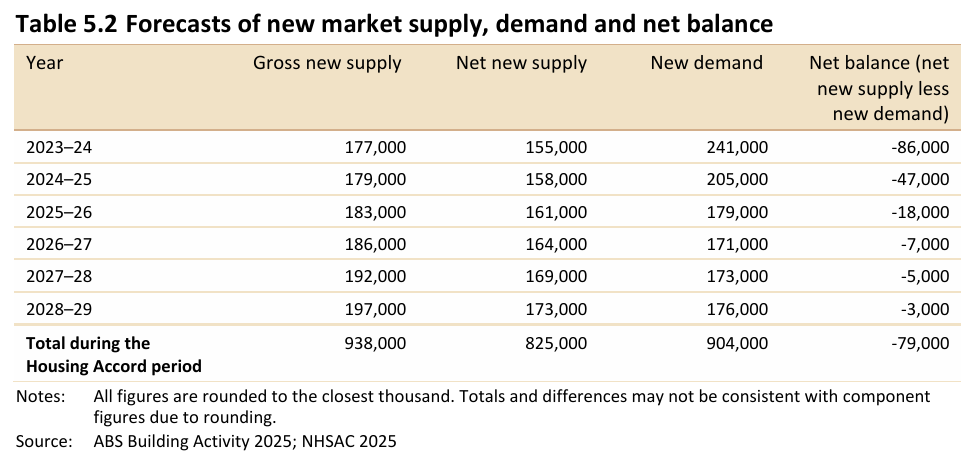
However, NHSAC’s sensitivity analysis estimated that if Australia’s population grew by just 15% less than forecast over the next five years, then the projected 79,000 housing shortfall would turn into a 40,000 housing surplus:
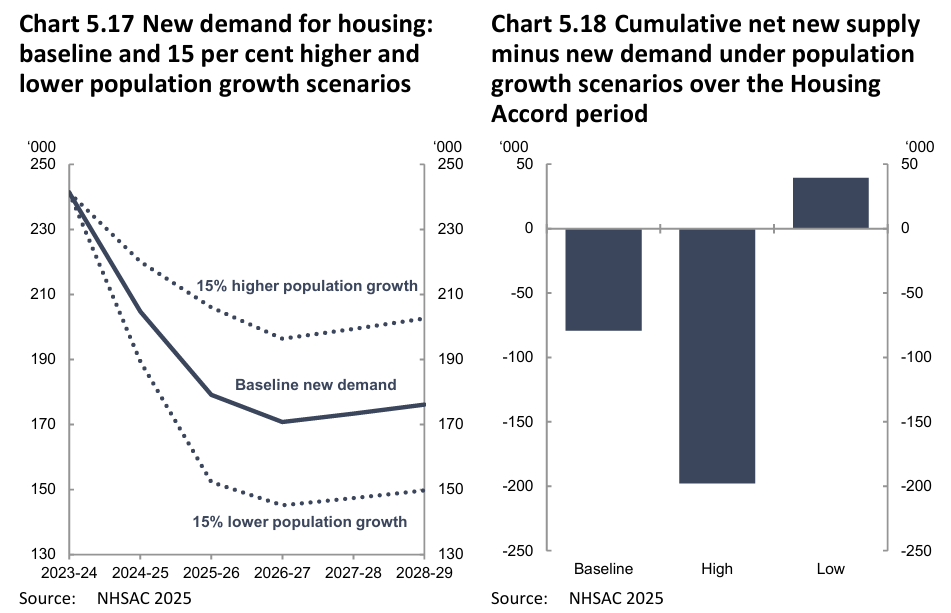
Ultimately, Australia is experiencing a chronic housing shortage because its population has grown faster than virtually any other developed country this century.
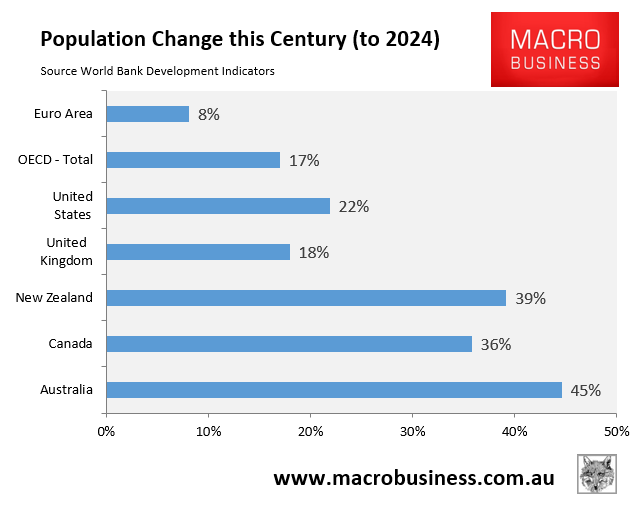
Therefore, the primary solution to the housing shortage is to match population demand with supply by lowering immigration.
The fundamental law of supply and demand applies equally to Australia’s housing market.

